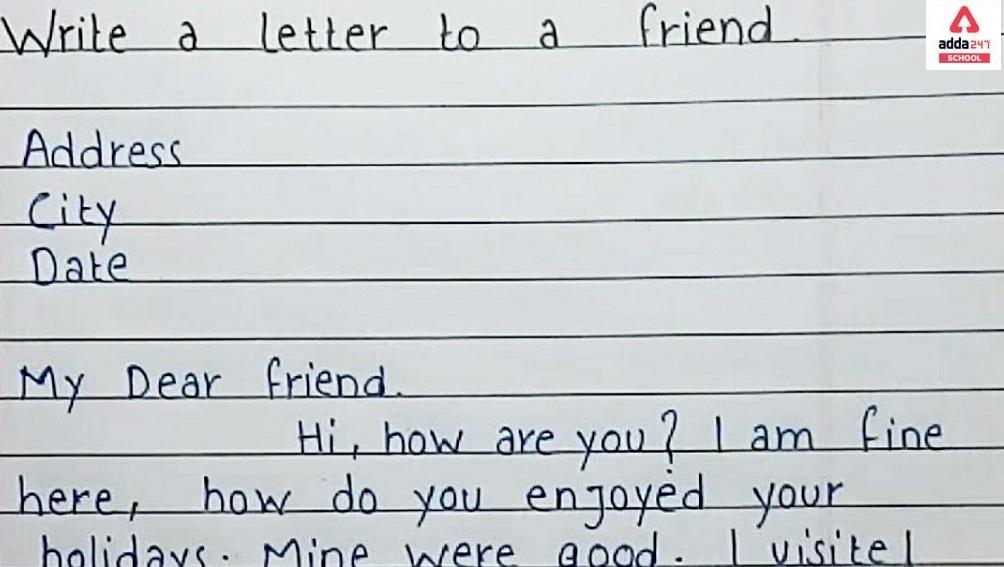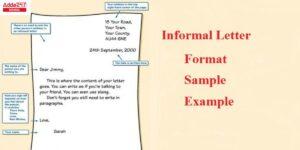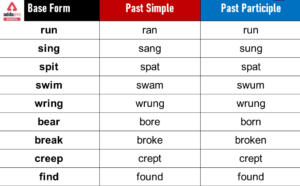Table of Contents
Writing Letters are an important part of our lives even after the advent of modern technologies of communication. Letters are used in the official mode of communication nowadays. Before the development of contemporary technology made communication so simple, knowing how to write a letter was seen to be a necessary skill. Even in the modern era, letters remain a vital tool for communication in both our personal and professional lives. In this article, we will learn the art of writing a good letter and go through some examples. We will also learn its types and some tips to write a good letter.
Letter Writing
Letter Writing is The art of composing a letter was seen as a crucial requirement until the development of modern technology made communication so simple. Though it has changed in reaction to technological advancements, letter writing is still a treasured and important mode of communication. It provides an exceptional means of fostering relationships, expressing feelings, and making enduring memories. A good letter is a vital tool for communication in both our professional and personal lives. Therefore, let’s educate ourselves on the complexities of letter writing. Letter Writing is very important for class 12 students for their board exams. For this purpose, we must learn how to write good letters. This skill will remain with us forever in our life.
Letter Writing in English
Letter Writing in English is very important. A letter is a written communication that is printed or handwritten on paper. Although it is not a necessity in and of itself, it is typically mailed or delivered to the addressee in an envelope. Any such message sent by mail is a letter, a written exchange of ideas between two people.
The art of letter writing has gone out of fashion as e-mails, texts, and other similar modes of communication have taken place as the standard for communication. But even now, letters still make up a significant portion of our communication, particularly official communication. Letters continue to be an essential form of communication, whether it’s a cover letter for a job, a bank reminder, or a college acceptance letter. Therefore, it’s crucial that we understand the details of letter writing.
To prepare up to the mark for class 10 Join the Class 10 Preparation Batch
Letter Writing: Types of Letters
Let’s start by understanding that there are basically two types of letters: formal and informal. But there are also many kinds of letters based on their formalities, contents, intended recipients, etc. Let’s examine a few of the letter types.
Formal Letter:- These letters follow a specific example and convention. They are completely kept proficient in nature, and straightforwardly address the issues concerned. Any sort of business letter or letter to specialists falls inside this given classification.
Informal Letter:- These are private letters. They need not follow any set example or stick to any conventions. They contain individual data or are a composed discussion. Casual letters are for the most part kept in touch with companions, colleagues, family members, and so on.
Business Letter:- This letter is composed among business journalists, by and large, and contains business data, for example, citations, orders, grievances, claims, letters for assortments, and so on. Such letters are in every case stringently formal and follow construction and examples of conventions.
Social Letter:- An individual letter composed in the event of an exceptional occasion is known as a social letter. Celebratory letters, sympathy letters, greeting letters, and so on are social letters.
English Letter Writing
An English letter writing format typically follows a certain structure and includes specific components. Here is a standard format for writing a formal letter:
1. Sender’s Address: Include your address at the top left corner of the page. This should include your name, street address, city, state, and postal code. If you are writing on behalf of a company or organization, include the organization’s name and address.
2. Date: Below your address, add the date on which you are writing the letter. It’s typically placed a few lines or one line below the sender’s address.
3. Receiver’s Address: On the left side of the page, below the date, include the recipient’s address. This should include the recipient’s name, title (if applicable), company or organization (if applicable), street address, city, state, and postal code.
4. Salutation: Begin the letter with a formal salutation. Use “Dear” followed by the recipient’s title and last name (e.g., “Dear Mr. Smith” or “Dear Dr. Johnson”). If you don’t know the recipient’s name, you can use a general salutation such as “To Whom It May Concern.”
5. Body of the Letter: This is the main content of the letter. It should be organized into paragraphs and convey your message clearly and concisely. Be sure to maintain a formal and professional tone. Use proper grammar and punctuation.
6. Closing: End the letter with a formal closing. Common closings include “Sincerely,” “Yours faithfully,” or “Best regards.” Place a comma after the closing, and leave space for your signature.
7. Signature: Below the closing, leave a few lines for your handwritten signature. Sign your name in ink. If the letter is typed, you can also use a digital signature if it’s an electronic letter.
8. Typed Name: Below your signature, type your full name. This helps identify you if your signature is hard to read.
9. Enclosures (if applicable): If you are including any additional documents or materials with the letter, such as a resume or a brochure, you can mention them here. For example, “Enclosure: Resume.”
10. Postscript (P.S.) (optional): If you have a brief, important message to add after the letter is finished, you can use a P.S. It’s typically placed below the signature.
11. Reference Line (optional): If your letter is in response to a specific request or inquiry, you can include a reference line right below the date to specify the subject or reference number.
Write a Letter?
Since we have taken in the fundamentals of imparting by means of letters and the kinds of letters too, let us center around certain tips for real letter composing.
Letter Writing Tip 1- Identify the type of Letter
This is obviously the first step in writing a letter. You must be able to identify the types of letters you write. This is determined by the addressee of the letter and the information conveyed by the letter. Suppose you are writing a letter to the principal of a university asking for a leave of absence. This will be a formal letter (type of formal letter with template). But let’s say you write to an old college professor after a long absence. In that case, this is a personal (unofficial) letter.
Letter Writing Tip 2- Be sure that the opening and closing of the letter must be appropriate
Proper opening of the letter is of utmost importance. A formal letter begins with a specific structure and greeting that is formal in nature. A free-form letter can be addressed to a person’s name or a free-form greeting at the writer’s option. When concluding a letter, it is also important to note the type of letter. A formal letter ends respectfully and impersonally, while an informal letter can end with a more personal note.
Letter Writing Tip 3- Must know the main intent of the letter
Once you start writing, try to get to the point as quickly as possible. Especially in formal letters, it is important to immediately clarify the purpose of the letter.
Letter Writing Tip 4- Use the language carefully
Letters should always be polite and considerate. Even if it is a letter of complaint, the point must be written carefully and politely. Therefore, polite expressions and kindred language should be used in all kinds of letters.
Letter Writing Tip 5- Length of the letter
Another important factor to consider is the length of the letter you are writing. Keep in mind that formal letters are usually to the point, concise and brief Long formal letters usually do not have the desired effect on the reader. The length of an informal letter is determined by the letter’s message and its relationship to the recipient.

English Letter Writing (Formal)
Letter Writing Step 1:- Include contact information and the date
All formal letters begin with contact information and date. In full-block style, this is placed in the top left corner.
As the sender, write the name and address first, left side, as you would when addressing an envelope. This isn’t just a formality, it’s a useful addition to make it easier for recipients to find your contact information if they want to reply.
You do not need to rewrite your contact information if you have written it on official company letterhead that already contains this information.
Skip a line after the address and add the date you are writing the letter.
Finally, skip the line again and add the recipient’s name and full address.
Feel free to include your title under your name if relevant. Leave a blank line after your contact information, then write your greeting.
Letter Writing Step 2:- Contains Salutation
A formal letter always has a salutation at the beginning of the written content to indicate that your message is about to begin. Most salutations begin with “Dear” followed by the recipient’s name. All salutations use the title in uppercase and end with a comma. You can also use the job title or department name if you don’t know the recipient’s name. B. “Dear Human Resources” As a last resort, use the general salutation “To those concerned” under all circumstances. Avoid “Dear Sir or Madam” as it’s a bit dated.
Letter Writing Step 3:- Body of the letter
The body of the letter is where you write the message which you want to convey. The body of the letter follows the normal rules of grammar, so write it as you would any other formal document.
Unlike personal letters, formal letters are to the point and concise, so don’t be afraid to get straight to the point. Some formal letters are only a sentence or two long, although others can go on for paragraphs if there’s a lot of information to convey. The important thing is that you stay focused and avoid unnecessary topics.
Letter Writing Step 4:- Closing
Formal letters also use a standard complimentary closing or sign-off, similar to greetings, before ending with a formal signature. One of the most common closings is “sincerely“, with variations such as “with sincere thanks” and “sincerely yours“. Other common signoffs are “Best” and “Yours”. Unlike greetings, closers use sentence capitalization. Always capitalize the first letter of the liberal degree, but capitalize only the first letter. Just like greetings, they always end with a comma.
Letter Writing Example (Formal)
Sender’s Address ……………….
Date: (DD/MM/YYYY)
Recipient’s Name,……………..
Designation & ………………….
Address……………………………
Subject: Request for information
Dear Sir,
I, Sagar Rathod’s father, would like you to send me a pamphlet with relevant information about the advertisement you placed in today’s newspaper.
My son passed his IX grade and is now in X grade. I was looking for the best support for the current school year. Your ad looks very promising. However, before making a final decision, I would like to take a closer look at your brochure. I understand that this is an important year for my child, so please send me the details as soon as possible.
I await your reply. Thank you.
Thanking you.
Complimentary Ending:
(E.g.: Yours sincerely/faithfully,)
Sender’s Signature
Sender’s Name
Sender’s Designation
Letter Writing- How to write an informal letter (Format)?
As the name suggests, informal letters are much more casual than formal letters. That means there aren’t that many rules and guidelines, and no one cares if you don’t put the space in the right place. However, there is a correct format that people are familiar with, so as a minimum, follow the steps below.
Letter Writing Step 1:- Address
The first thing you need to write is your address, the author’s address (basically the sender’s address). We usually write our address on the top left of the page. Your address must be correct and complete.
Letter Writing Step 2:-Put the date (optional)
Then write the date just below the address. This allows the reader to know when the informal letter was written. By doing so, he will be able to better sympathize with the content of the letter. The date should preferably be in an extended format.
Letter Writing Step 3:- Salutation
Like formal letters, informal letters begin with a polite greeting to the recipient. The standard format is the same. The word “Dear” is followed by the person’s name and the title is capitalized, such as “Dear Mr. Shivam“.
Letter Writing Step 4:- Body of the letter
The body of the letter is where you write your message, and informal letters are often used to share news and keep in touch. They tend to have a conversational tone. This means that you are free to include any slang or language you use when speaking directly.
Letter Writing Step 5:- Closing of the letter
Informal letters also use an independent knot before signing and follow the same format as formal letters. This includes capitalizing sentences (only the first letter is capitalized), adding a comma at the end, and leaving enough space to sign your name if sending a paper letter.
Letter Writing Example (Informal)
Sender’s Address ……………….
Date: (DD/MM/YYYY)
Dear friend,
My joy knew no bounds when I got to know that you did well in school and made your dreams come true. I was so happy that I wanted to congratulate you directly. The results proved that hard work, determination, and perseverance yield good results.
You worked hard and very passionately. I know you were very nervous too, but I was always sure you would come out on top. I apologize for not being able to attend the celebration even though it was my wish. See you soon.
Be encouraged and do your best. Your future is very bright and my parents and sister have sent lots of love and heartfelt congratulations.
With lots of love and best wishes.
Yours lovingly
Shefali
How to Write a Letter?
Writing a letter involves several steps, and the format and content can vary depending on the type of letter you’re writing (e.g., a formal letter, a personal letter, a business letter, etc.). Here are the general steps to help you write a letter:
- Choose the Format:
- Determine the type of letter you’re writing and choose an appropriate format (e.g., block format, modified block format, semi-block format, or full block format).
- Include Your Contact Information:
- At the top of the page, include your name, address, phone number, and email address (if applicable). This is typically aligned on the left-hand side.
- Date:
- Include the date below your contact information. It can be aligned on the left or right side, depending on the format you’ve chosen.
- Recipient’s Contact Information:
- Below the date, include the recipient’s name, title, company (if applicable), and address. Make sure to address the recipient correctly.
- Salutation:
- Start the letter with a formal salutation, such as “Dear Mr. Smith,” “Dear Professor Johnson,” or “To Whom It May Concern” if you don’t have a specific recipient in mind.
- Introduction (Opening Paragraph):
- Begin the letter with a brief introduction that states the purpose of your letter. This should be concise and engaging.
- Body (Middle Paragraphs):
- The body of the letter provides the details, explanations, and information you want to convey. Use clear and concise language. Organize your thoughts logically, and use paragraphs to break up different points.
- Closing Paragraph:
- Summarize your main points and provide any necessary follow-up information. Be courteous and professional.
- Closing (Complimentary Close):
- Use a polite closing phrase, such as “Sincerely,” “Yours faithfully,” or “Best regards,” followed by a comma.
- Signature:
- Leave space for your handwritten signature if it’s a physical letter. If you’re sending a digital letter (e.g., via email), you can include a scanned or typed version of your signature.
- Typed Name:
- Type your full name below the signature line. This is important, especially for formal letters.
- Enclosures or Attachments:
- If you’re including any additional documents with your letter (e.g., a resume or references), mention them at the end of the letter.
- Postscript (Optional):
- If you have any additional, important information that you forgot to include in the main body of the letter, you can add a postscript (P.S.) below your signature. However, it’s better to include all relevant information in the main body of the letter.
- Proofread and Edit:
- Before sending your letter, carefully proofread it for grammar, spelling, punctuation, and clarity. Editing is crucial to ensure your letter is professional and error-free.
- Address and Send:
- Place the letter in an envelope, write the recipient’s address on it, affix postage (if necessary), and send it through the appropriate mail or email channel.
Remember to adapt the tone, language, and content of your letter to suit the specific purpose and audience. Whether you’re writing a formal letter, a personal letter, a cover letter, or any other type of letter, clear and effective communication is key.
Patra in English- Hindi Letter Writing Format
पत्र लिखने की कला को तब तक एक महत्वपूर्ण आवश्यकता के रूप में देखा जाता था जब तक कि आधुनिक तकनीक के विकास ने संचार को इतना सरल नहीं बना दिया। अब भी, पत्र हमारे पेशेवर और व्यक्तिगत जीवन दोनों में संचार के लिए एक महत्वपूर्ण उपकरण बने हुए हैं। इसलिए, आइए पत्र लेखन की जटिलताओं के बारे में स्वयं को शिक्षित करें।
पत्र लिखना
एक पत्र एक लिखित संचार है जो कागज पर मुद्रित या हस्तलिखित होता है। हालांकि यह अपने आप में एक आवश्यकता नहीं है, इसे आम तौर पर एक लिफाफे में डाक द्वारा भेजा या वितरित किया जाता है। मेल द्वारा भेजा गया ऐसा कोई भी संदेश एक पत्र है, दो लोगों के बीच विचारों का लिखित आदान-प्रदान।
पत्र लेखन की कला फैशन से बाहर हो गई है क्योंकि संचार के मानक के रूप में ई-मेल, ग्रंथ और संचार के अन्य समान तरीके हो गए हैं। लेकिन अब भी, पत्र अभी भी हमारे संचार, विशेष रूप से आधिकारिक संचार का एक महत्वपूर्ण हिस्सा हैं। पत्र संचार का एक अनिवार्य रूप बना हुआ है, चाहे वह नौकरी के लिए एक कवर लेटर हो, बैंक रिमाइंडर हो, या कॉलेज स्वीकृति पत्र हो। इसलिए, यह महत्वपूर्ण है कि हम पत्र लेखन के विवरण को समझें।
पत्र लेखन: पत्रों के प्रकार
आइए यह समझकर शुरू करें कि मूल रूप से पत्र दो प्रकार के होते हैं: औपचारिक और अनौपचारिक। लेकिन उनकी औपचारिकताओं, सामग्री, इच्छित प्राप्तकर्ता आदि के आधार पर कई प्रकार के पत्र भी होते हैं। आइए कुछ पत्र प्रकारों की जांच करें।
औपचारिक पत्र:- ये पत्र एक विशिष्ट उदाहरण और परंपरा का पालन करते हैं। वे प्रकृति में पूरी तरह से कुशल हैं, और सीधे संबंधित मुद्दों को संबोधित करते हैं। किसी भी प्रकार का व्यावसायिक पत्र या विशेषज्ञों को पत्र इस दिए गए वर्गीकरण के अंतर्गत आता है।
अनौपचारिक पत्र :- ये निजी पत्र हैं। उन्हें किसी निर्धारित उदाहरण का अनुसरण करने या किसी परंपरा से चिपके रहने की आवश्यकता नहीं है। उनमें व्यक्तिगत डेटा होता है या एक रचित चर्चा होती है। आकस्मिक पत्र अधिकांश भाग के लिए साथियों, सहकर्मियों, परिवार के सदस्यों आदि के संपर्क में रहते हैं।
व्यावसायिक पत्र:- यह पत्र कुल मिलाकर व्यावसायिक पत्रकारों के बीच बना है, और इसमें व्यावसायिक डेटा शामिल है, उदाहरण के लिए, उद्धरण, आदेश, शिकायतें, दावे, वर्गीकरण के लिए पत्र, और इसी तरह। ऐसे पत्र हर मामले में कड़ाई से औपचारिक होते हैं और निर्माण और सम्मेलनों के उदाहरण का पालन करते हैं।
सामाजिक पत्र:- किसी विशेष अवसर की स्थिति में रचित एक व्यक्तिगत पत्र सामाजिक पत्र के रूप में जाना जाता है। उत्सव पत्र, सहानुभूति पत्र, अभिवादन पत्र, आदि सामाजिक पत्र हैं।
पत्र लेखन: पत्र लिखने के लिए युक्तियाँ
चूँकि हमने अक्षरों के माध्यम से और अक्षरों के प्रकारों के माध्यम से प्रदान करने के मूल सिद्धांतों को भी लिया है, आइए हम वास्तविक पत्र रचना के लिए कुछ युक्तियों पर ध्यान केंद्रित करें।
पत्र के प्रकार की पहचान करें
यह स्पष्ट रूप से एक पत्र लिखने का पहला कदम है। आप अपने द्वारा लिखे जाने वाले पत्रों के प्रकारों की पहचान करने में सक्षम होने चाहिए। यह पत्र के प्राप्तकर्ता और पत्र द्वारा दी गई जानकारी द्वारा निर्धारित किया जाता है। मान लीजिए आप किसी विश्वविद्यालय के प्राचार्य को पत्र लिखकर अनुपस्थिति की छुट्टी की मांग कर रहे हैं। यह एक औपचारिक पत्र होगा (टेम्पलेट के साथ औपचारिक पत्र का प्रकार)। लेकिन मान लीजिए कि आप लंबे समय से अनुपस्थित रहने के बाद कॉलेज के एक पुराने प्रोफेसर को लिखते हैं। उस मामले में, यह एक व्यक्तिगत (अनौपचारिक) पत्र है।
सुनिश्चित करें कि पत्र का उद्घाटन और समापन उचित होना चाहिए
पत्र का उचित उद्घाटन अत्यंत महत्वपूर्ण है। एक औपचारिक पत्र एक विशिष्ट संरचना और अभिवादन से शुरू होता है जो प्रकृति में औपचारिक होता है। एक फ्री-फॉर्म पत्र को किसी व्यक्ति के नाम पर संबोधित किया जा सकता है या लेखक के विकल्प पर एक फ्री-फॉर्म अभिवादन किया जा सकता है। एक पत्र का समापन करते समय, पत्र के प्रकार को नोट करना भी महत्वपूर्ण है। एक औपचारिक पत्र सम्मानपूर्वक और अवैयक्तिक रूप से समाप्त होता है, जबकि एक अनौपचारिक पत्र अधिक व्यक्तिगत नोट के साथ समाप्त हो सकता है।
पत्र का मुख्य उद्देश्य पता होना चाहिए
एक बार जब आप लिखना शुरू कर दें, तो जितनी जल्दी हो सके मुद्दे पर पहुँचने की कोशिश करें। विशेष रूप से औपचारिक पत्रों में पत्र के उद्देश्य को तुरंत स्पष्ट करना महत्वपूर्ण है।
भाषा का प्रयोग सावधानी से करें
पत्र हमेशा विनम्र और विचारशील होने चाहिए। चाहे वह शिकायत का पत्र ही क्यों न हो, बिंदु को सावधानीपूर्वक और विनम्रता से लिखा जाना चाहिए। अत: सभी प्रकार के पत्रों में विनम्र भावों और सहृदय भाषा का प्रयोग करना चाहिए।
पत्र की लंबाई
विचार करने के लिए एक अन्य महत्वपूर्ण कारक आपके द्वारा लिखे जा रहे पत्र की लंबाई है। ध्यान रखें कि औपचारिक पत्र आमतौर पर बिंदु तक होते हैं, संक्षिप्त और संक्षिप्त लंबे औपचारिक पत्र आमतौर पर पाठक पर वांछित प्रभाव नहीं डालते हैं। एक अनौपचारिक पत्र की लंबाई पत्र के संदेश और प्राप्तकर्ता के साथ उसके संबंध से निर्धारित होती है।
Related Post:



 Informal Letter Format, Samples, Example...
Informal Letter Format, Samples, Example...
 Verb Forms V1 V2 V3- Three Forms of Verb
Verb Forms V1 V2 V3- Three Forms of Verb
 Tenses Chart in English with Rules and E...
Tenses Chart in English with Rules and E...
















How Are You
Hi there! This is my first visit to your blog! We are a group of volunteers and starting a new initiative in a community in the same niche. Your blog provided us valuable information to work on. You have done a marvellous job!
Best Regards